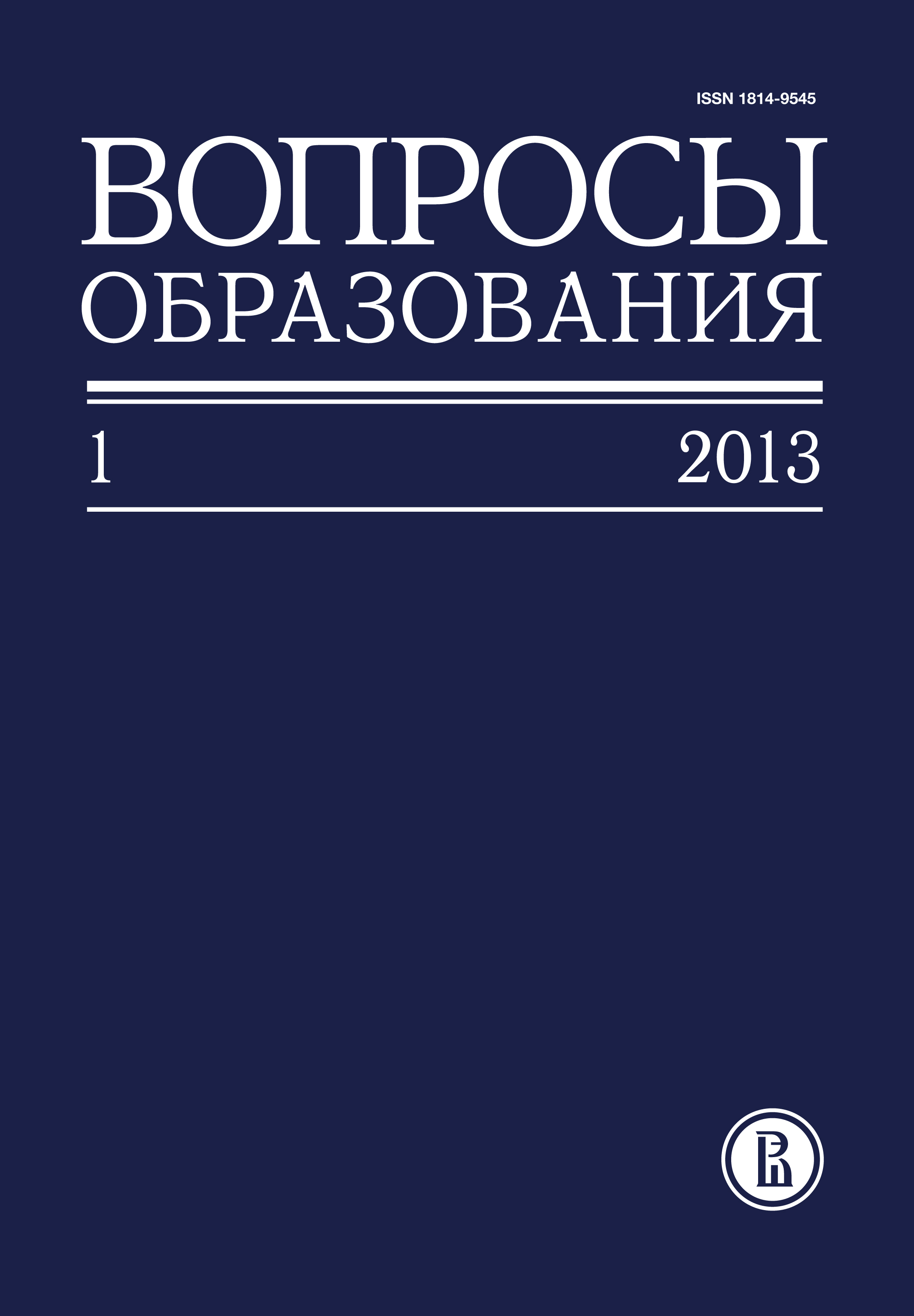Типологизация первокурсников Москвы: кто поступает в столичные вузы?
Аннотация
Попов Дмитрий Сергеевич — кандидат социологических наук, старший научный сотрудник Центра мониторинга качества образования НИУ ВШЭ. Эл. адрес: dmitry_popov@sociolog.net
Тюменева Юлия Алексеевна — кандидат психологических наук, старший научный сотрудник Центра мониторинга качества образования НИУ ВШЭ. Эл. адрес: jutu@yandex.ru
Кузьмина Юлия Владимировна — аналитик Центра мониторинга качества образования НИУ ВШЭ. Эл. адрес: papushka@mail.ru
На основании материалов обширного обследования первокурсников анализируются особенности адаптации студентов к обучению в вузе. С помощью двухшагового кластерного анализа выделены семь качественно разнородных групп студентов вузов Москвы. Проанализированы специфические для каждой группы трудности в обучении, а также различия между студентами разных групп в оценке социальной жизни в вузе, особенности жизненных и образовательных целей.
Установлено, что основная дифференциация студентов по группам на старте обучения происходит по семейным характеристикам и параметрам выбора специальности. Эти характеристики задают разное отношение к учебе и пребыванию в вузе в начале получения высшего образования. Параметры школьной успешности являются менее важными для дифференциации групп студентов. Выявлено, что наиболее значимые различия в группах существуют в оценке уверенности в будущей карьере и общей оценке опыта обучения в вузе. Выделены виды учебной работы в вузе, которые вызывают у представителей разных кластеров наибольшие трудности. Определены различия между кластерами в оценке первокурсниками своего выбора специальности обучения.
Представлено детальное описание каждого из полученных кластеров. Обозначены перспективы использования кластеризации. На примере нескольких выделенных групп студентов даны рекомендации по созданию программ, направленных на компенсацию специфических дефицитов и удовлетворение потребностей студентов. Отмечается, что результаты кластерного анализа позволят в дальнейшем проанализировать образовательные траектории студентов разных кластеров.








